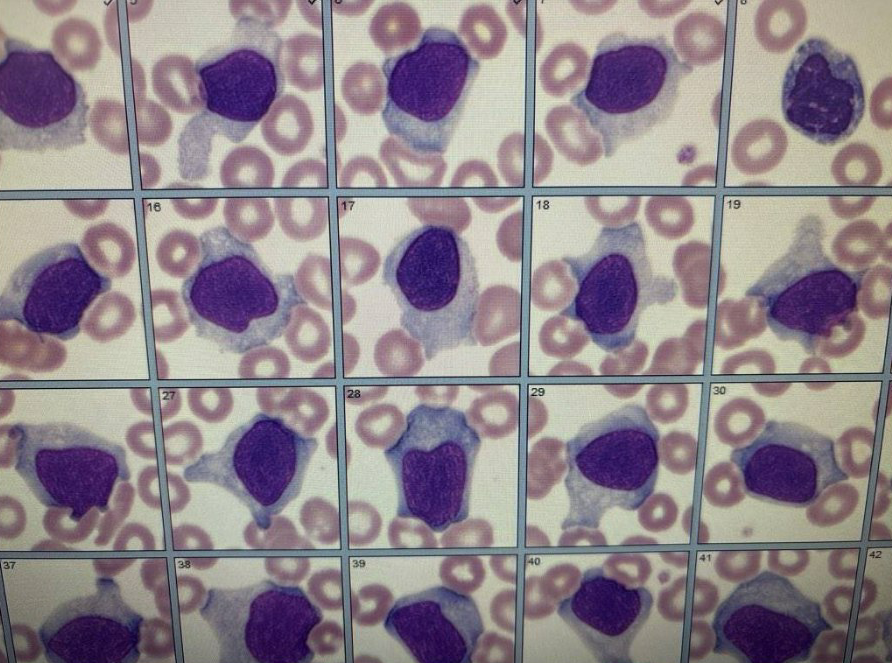Sunday Poster Session
Category: Liver
P1876 - Unveiling the Unexpected: A Rare Case of Severe Hepatitis Triggered by Infectious Mononucleosis
Sunday, October 26, 2025
3:30 PM - 7:00 PM PDT
Location: Exhibit Hall
- BB
Benjamin C. Billingsley, DO
University of Mississippi Medical Center - - Jackson, MS
Jackson, MS
Presenting Author(s)
Benjamin C. Billingsley, DO1, Callie Cross, MD2, Joydeep Chakraborty, MD2
1University of Mississippi Medical Center - - Jackson, MS, Jackson, MS; 2University of Mississippi Medical Center, Jackson, MS
Introduction: Epstein Barr virus (EBV) is a herpesvirus that is estimated to infect much of the world’s population. Most infections are asymptomatic, though some manifest as infectious mononucleosis (IM), characterized by fever, pharyngitis, and lymphadenopathy. Here we present a rare case of EBV hepatitis which led to transaminase elevations of nearly twenty-six times the upper limit of normal.
Case Description/
Methods: A previously healthy 22-year-old female presented with a four-day history of intractable nausea and vomiting with associated headache, diarrhea, and fatigue for the preceding month. There was no known family history of liver disease, and the patient denied significant alcohol consumption, while admitting to infrequent marijuana use. Heart rate was 104 beats per minute on arrival, but vital signs were otherwise normal. Physical exam demonstrated anicteric sclerae, presence of soft, non-tender abdomen, and deep upper cervical lymphadenopathy. Labs on admission were notable for negative pregnancy test, leukocytosis with lymphocyte predominance, alkaline phosphatase 252 U/L, AST 499 U/L, ALT 672 U/L, INR 1.05, and WBC 12.5 TH/cmm. On peripheral smear (image 1), there was an abnormally high presence of atypical lymphocytes (40.3%). Abdominal ultrasound showed no abnormalities. The patient was managed supportively with plan to trend liver enzymes while assessing for the etiology of her presentation. Despite quick resolution of symptoms, liver enzymes initially remained stagnant. Autoimmune serologies were unrevealing except for a mild elevation in serum IgG. Infectious studies were largely unremarkable, apart from EBV PCR which demonstrated a viral load of 72,122 copies/mL. Days later, liver enzymes began to down-trend rapidly, so liver biopsy was deferred. She was seen one month post-discharge by which time liver enzymes had normalized.
Discussion: EBV-associated hepatitis is rarely described in literature. Our case highlights an unusual presentation of IM leading to acute hepatitis in an immunocompetent individual. While mildly elevated liver enzymes may be seen, rarely do transaminase levels become greater than five times the upper limit of normal. Most cases of IM spontaneously resolve, but several case reports describe N-acetylcysteine as a treatment option, though use beyond treating acetaminophen toxicity remains controversial. This case report aims to raise awareness of IM-associated hepatitis, and it should alert clinicians to consider EBV as a potential cause of elevated liver enzymes.

Figure: Atypical lymphocytes demonstrated on peripheral smear.
Disclosures:
Benjamin Billingsley indicated no relevant financial relationships.
Callie Cross indicated no relevant financial relationships.
Joydeep Chakraborty indicated no relevant financial relationships.
Benjamin C. Billingsley, DO1, Callie Cross, MD2, Joydeep Chakraborty, MD2. P1876 - Unveiling the Unexpected: A Rare Case of Severe Hepatitis Triggered by Infectious Mononucleosis, ACG 2025 Annual Scientific Meeting Abstracts. Phoenix, AZ: American College of Gastroenterology.
1University of Mississippi Medical Center - - Jackson, MS, Jackson, MS; 2University of Mississippi Medical Center, Jackson, MS
Introduction: Epstein Barr virus (EBV) is a herpesvirus that is estimated to infect much of the world’s population. Most infections are asymptomatic, though some manifest as infectious mononucleosis (IM), characterized by fever, pharyngitis, and lymphadenopathy. Here we present a rare case of EBV hepatitis which led to transaminase elevations of nearly twenty-six times the upper limit of normal.
Case Description/
Methods: A previously healthy 22-year-old female presented with a four-day history of intractable nausea and vomiting with associated headache, diarrhea, and fatigue for the preceding month. There was no known family history of liver disease, and the patient denied significant alcohol consumption, while admitting to infrequent marijuana use. Heart rate was 104 beats per minute on arrival, but vital signs were otherwise normal. Physical exam demonstrated anicteric sclerae, presence of soft, non-tender abdomen, and deep upper cervical lymphadenopathy. Labs on admission were notable for negative pregnancy test, leukocytosis with lymphocyte predominance, alkaline phosphatase 252 U/L, AST 499 U/L, ALT 672 U/L, INR 1.05, and WBC 12.5 TH/cmm. On peripheral smear (image 1), there was an abnormally high presence of atypical lymphocytes (40.3%). Abdominal ultrasound showed no abnormalities. The patient was managed supportively with plan to trend liver enzymes while assessing for the etiology of her presentation. Despite quick resolution of symptoms, liver enzymes initially remained stagnant. Autoimmune serologies were unrevealing except for a mild elevation in serum IgG. Infectious studies were largely unremarkable, apart from EBV PCR which demonstrated a viral load of 72,122 copies/mL. Days later, liver enzymes began to down-trend rapidly, so liver biopsy was deferred. She was seen one month post-discharge by which time liver enzymes had normalized.
Discussion: EBV-associated hepatitis is rarely described in literature. Our case highlights an unusual presentation of IM leading to acute hepatitis in an immunocompetent individual. While mildly elevated liver enzymes may be seen, rarely do transaminase levels become greater than five times the upper limit of normal. Most cases of IM spontaneously resolve, but several case reports describe N-acetylcysteine as a treatment option, though use beyond treating acetaminophen toxicity remains controversial. This case report aims to raise awareness of IM-associated hepatitis, and it should alert clinicians to consider EBV as a potential cause of elevated liver enzymes.

Figure: Atypical lymphocytes demonstrated on peripheral smear.
Disclosures:
Benjamin Billingsley indicated no relevant financial relationships.
Callie Cross indicated no relevant financial relationships.
Joydeep Chakraborty indicated no relevant financial relationships.
Benjamin C. Billingsley, DO1, Callie Cross, MD2, Joydeep Chakraborty, MD2. P1876 - Unveiling the Unexpected: A Rare Case of Severe Hepatitis Triggered by Infectious Mononucleosis, ACG 2025 Annual Scientific Meeting Abstracts. Phoenix, AZ: American College of Gastroenterology.
